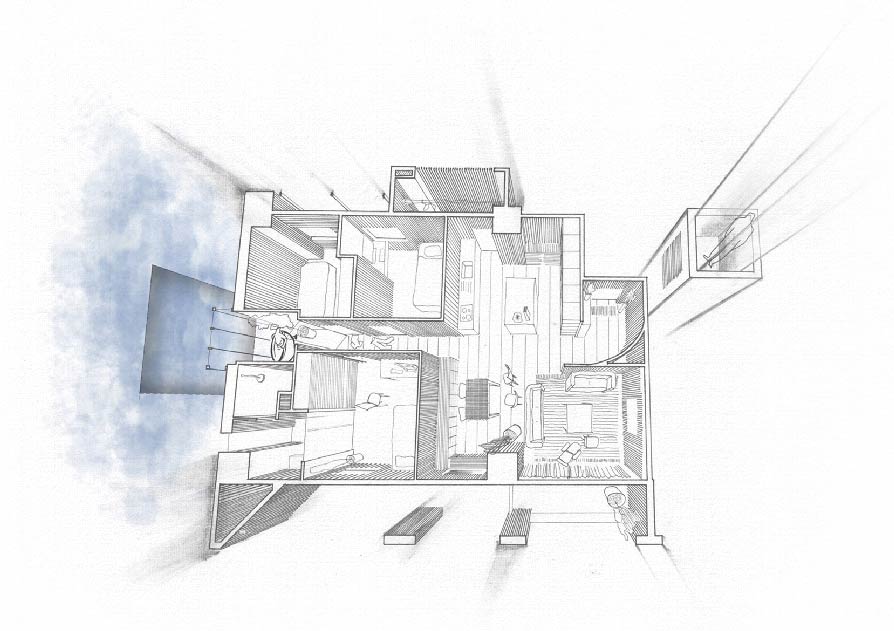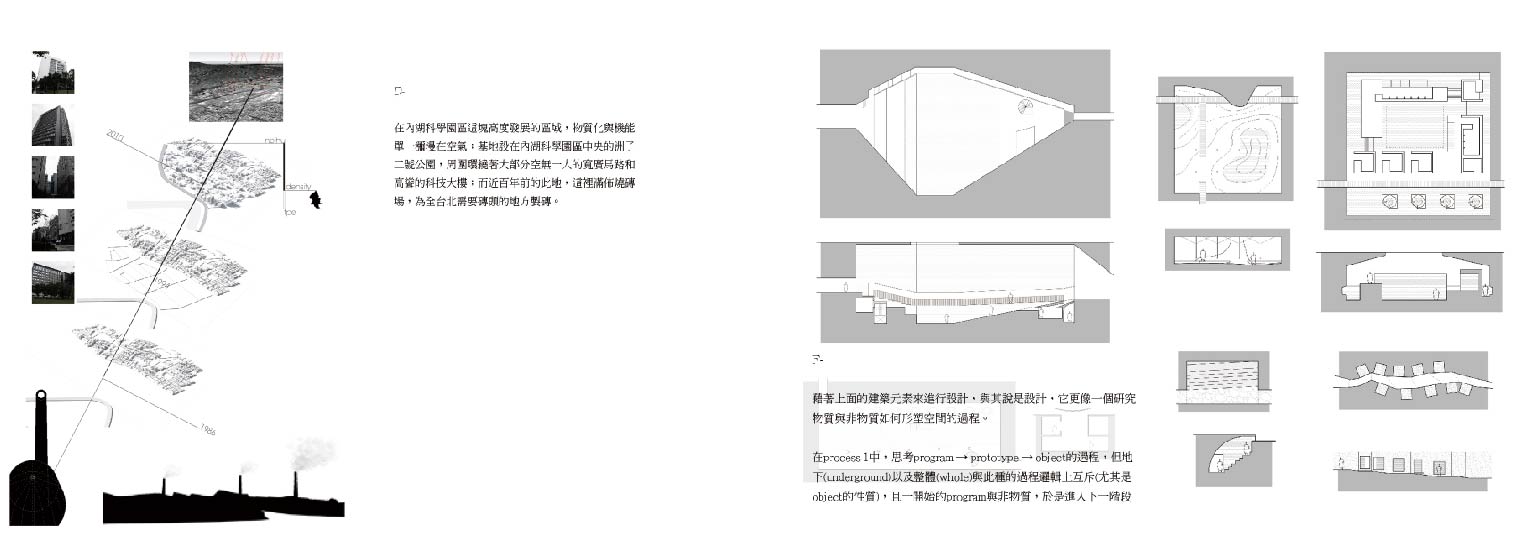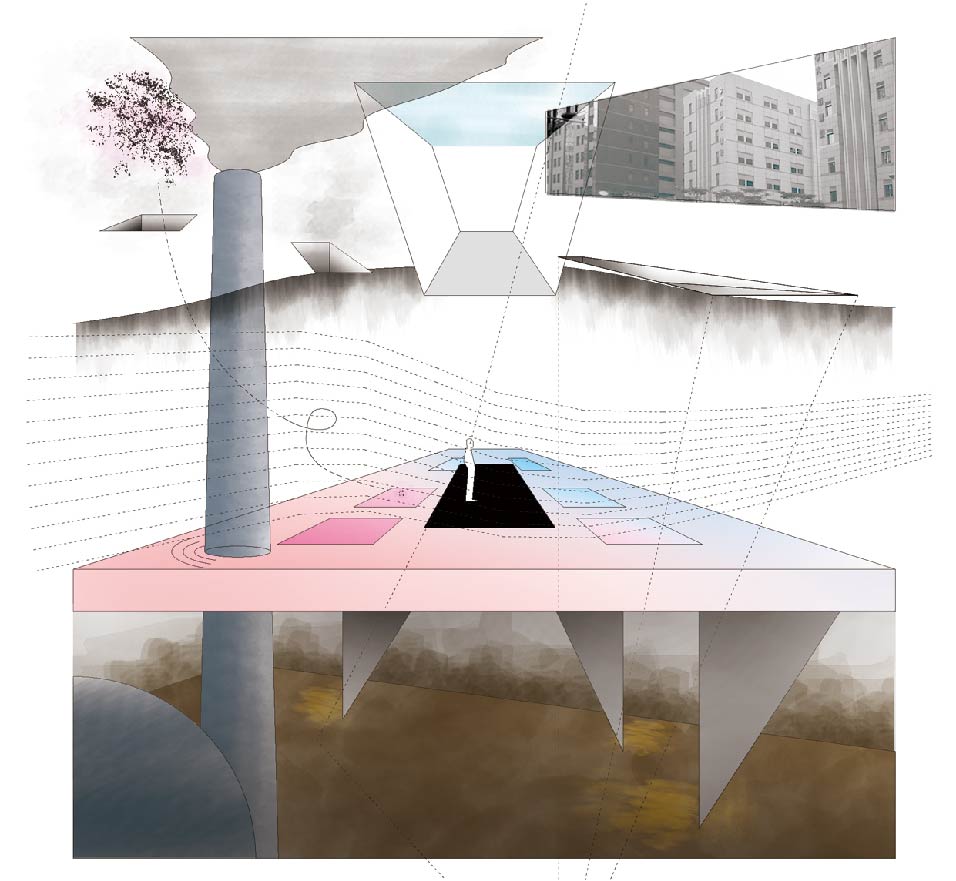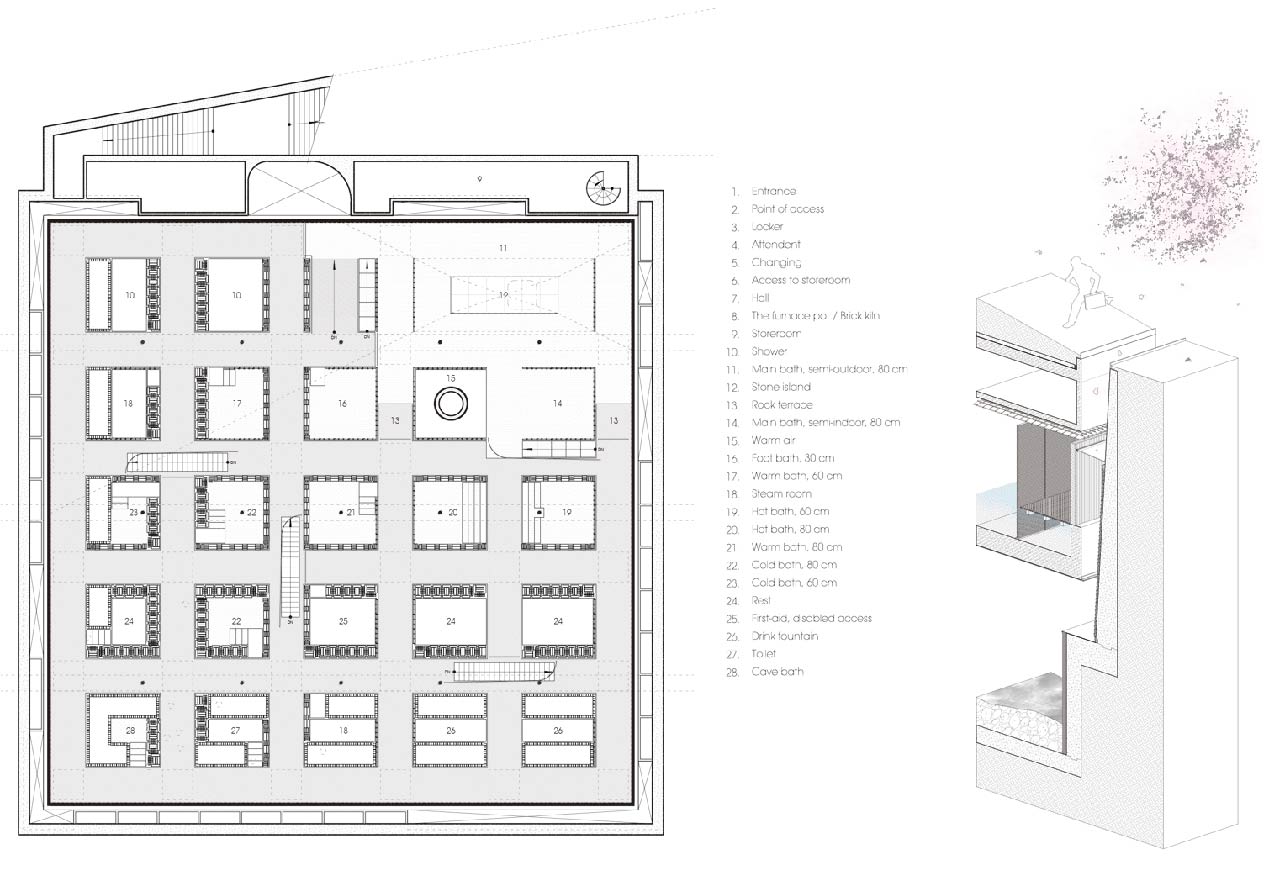





Artificial Dematerialization
台灣 / taiwan
林佑丞 /
在建築設計圖中時常在界定物質與
代表理性的粗細線之間填入材質、
陰影或指示箭頭,除了指定材質或
為了表現而畫的表現法這種消極的
態度外,我更相信這是設計者為了
達成空間的某種狀態與氛圍,利用
物質控制空間的非物質取向,掌握
空間的全貌,使人經由空間達到更
高的精神狀態。看見的與看不見的
同時組成空間,這個空閰是完整
人的狀態也才完整。
在沐洽時經由空閭的非物鹽所體鑒
到的日夢(daydream)狀態,進
探討物質與非物質如何形蛆空間
。
面對都市過於物質取向的區域,
一個浴場,批判了周遭同時補足
周遭與人們的精神面向,使生命更
完整。
In architecture drawing, we usually fill material, shadow
or direction arrows between those different thicknesses
of lines. In addition of defining the material or showing
drawing skills, I would believe that the designer wants to
reach one kind of condition or atmosphere. By using
material, the designer controls the dematerialize aspect
of space, and then grasps the circumstance of space
which allowing the participants achieve the higher state
of mind. By visible and invisible, the space is complete,
and the being is complete.
By state of daydream experienced at bathroom, I discuss
how to create the space using material and dematerialize.
The bath, placed in the overly materialistic urban area,
criticizes the surrounding, but also makes up the being’s
mind and makes the life complete much more.
More Projects of this Session
展區其他作品